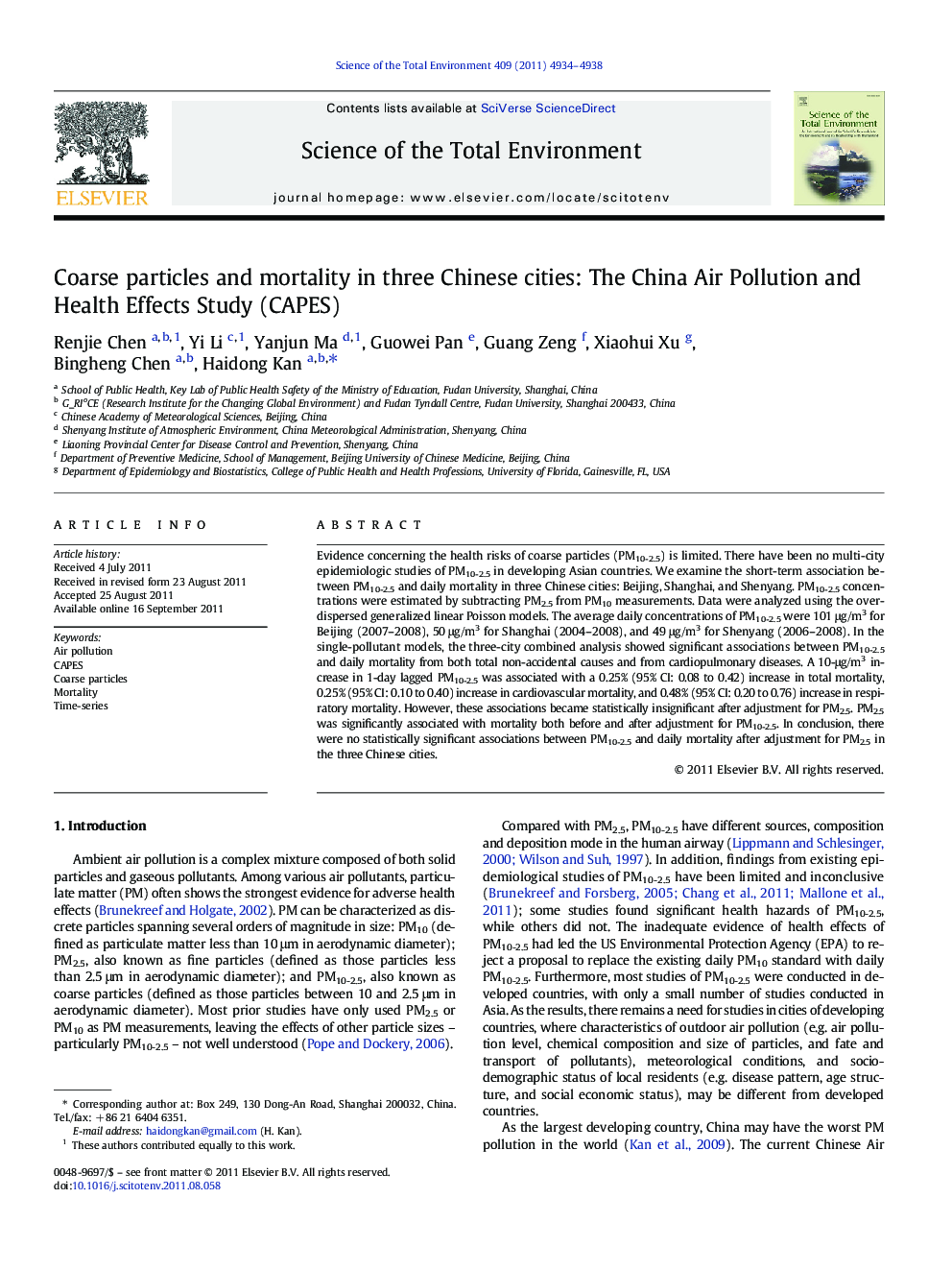| Article ID | Journal | Published Year | Pages | File Type |
|---|---|---|---|---|
| 4430166 | Science of The Total Environment | 2011 | 5 Pages |
Evidence concerning the health risks of coarse particles (PM10-2.5) is limited. There have been no multi-city epidemiologic studies of PM10-2.5 in developing Asian countries. We examine the short-term association between PM10-2.5 and daily mortality in three Chinese cities: Beijing, Shanghai, and Shenyang. PM10-2.5 concentrations were estimated by subtracting PM2.5 from PM10 measurements. Data were analyzed using the over-dispersed generalized linear Poisson models. The average daily concentrations of PM10-2.5 were 101 μg/m3 for Beijing (2007–2008), 50 μg/m3 for Shanghai (2004–2008), and 49 μg/m3 for Shenyang (2006–2008). In the single-pollutant models, the three-city combined analysis showed significant associations between PM10-2.5 and daily mortality from both total non-accidental causes and from cardiopulmonary diseases. A 10-μg/m3 increase in 1-day lagged PM10-2.5 was associated with a 0.25% (95% CI: 0.08 to 0.42) increase in total mortality, 0.25% (95% CI: 0.10 to 0.40) increase in cardiovascular mortality, and 0.48% (95% CI: 0.20 to 0.76) increase in respiratory mortality. However, these associations became statistically insignificant after adjustment for PM2.5. PM2.5 was significantly associated with mortality both before and after adjustment for PM10-2.5. In conclusion, there were no statistically significant associations between PM10-2.5 and daily mortality after adjustment for PM2.5 in the three Chinese cities.
► There have been no multi-city epidemiologic studies of PM10-2.5 in Asian developing countries. ► In three Chinese cities, we did not find significant associations of PM10-2.5 with daily mortality when adjusted for PM2.5. ► The health effect of PM2.5 remained significant after adjustment for PM10-2.5.
